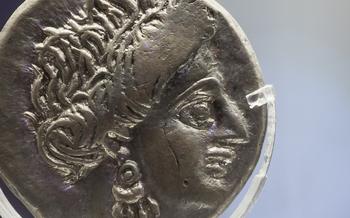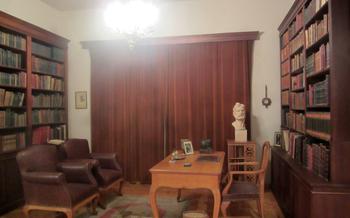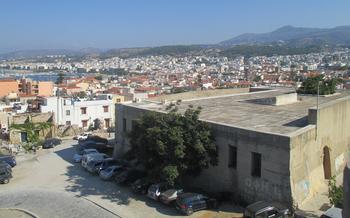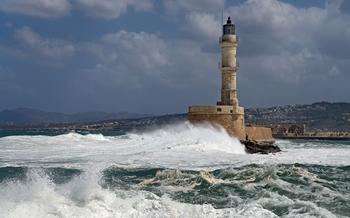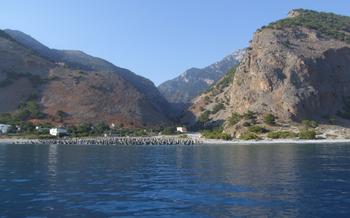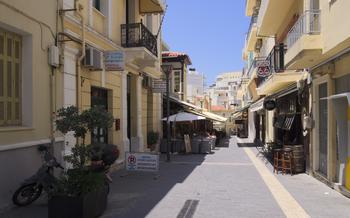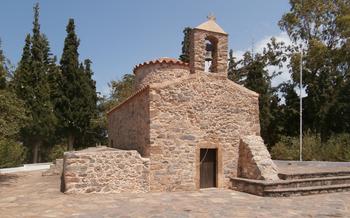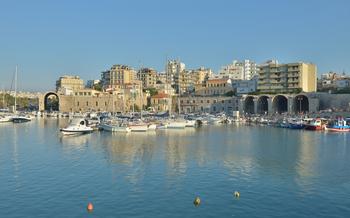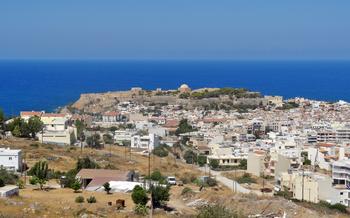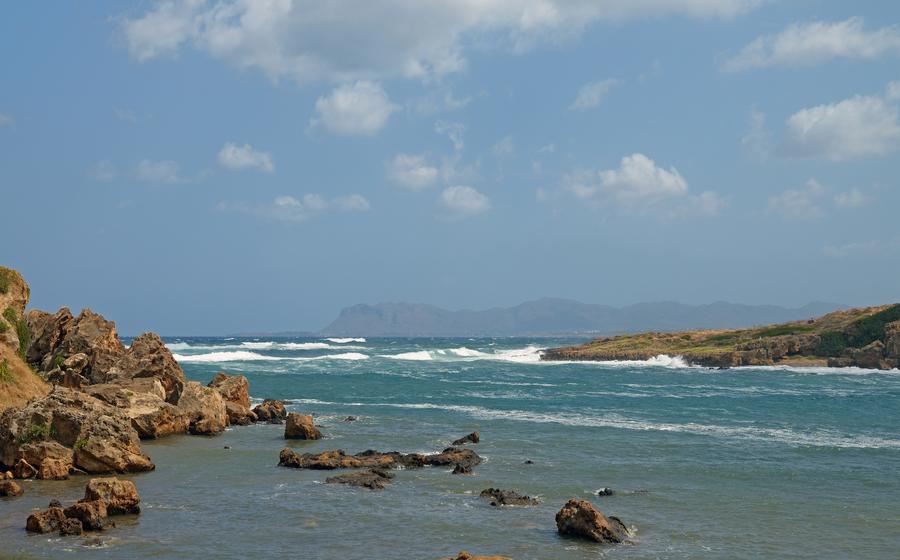
Kournas Cave
- Historical Background
- Location
- Natural Beauty
- Mythological Significance
- Exploring the Cave
- Stalactites and Stalagmites
- Underground Lake
- Archaeological Findings
- Wildlife and Vegetation
- Photography Opportunities
- Accessibility
- Guides and Tours
- Duration of Visit
- Facilities and Amenities
- Insider Tip
Historical Background
The Kournas Cave, steeped in history, has witnessed the rise and fall of civilizations. Its story begins in the Bronze Age, when Minoan influences left an indelible mark on the region. During the Roman and Byzantine periods, the cave became a refuge for those seeking shelter from religious persecution and invasions. In the 13th century, the Venetians, known for their prowess as seafaring traders, conquered Crete and established their rule over the island. The Ottomans, driven by their desire for expansion, eventually wrested control of the island from the Venetians, leaving a lasting legacy that is still visible today.
Location
The Kournas Cave is strategically located just 22 kilometers from the city of Chania. This close proximity makes it an easily accessible destination for those based in the city or exploring the surrounding region. Visitors can conveniently reach the cave by car, following the well-maintained roads that lead to its entrance. Alternatively, for those who prefer public transportation, there are regular buses that depart from Chania and make a stop near the cave's entrance, providing a convenient and affordable option for getting there.
Natural Beauty
The Kournas Cave is nestled amidst breathtaking landscapes that paint a picture of natural splendor. The cave is surrounded by lush vegetation, towering mountains, and olive groves that stretch out as far as the eye can see. As you approach the cave, you'll be greeted by unique rock formations that have been sculpted by centuries of wind and erosion. These formations create a dramatic backdrop for the cave, adding to its allure. Once inside the cave, you'll be amazed by the stunning views that unfold before you. The cave's interior is adorned with intricate stalactite and stalagmite formations, which create a magical and ethereal atmosphere. From the cave's mouth, you can gaze out onto the surrounding landscape, where the deep blue waters of the Kournas Lake glisten in the sunlight, creating a breathtaking panorama that will leave you in awe.
Mythological Significance
Kournas Cave is shrouded in mythological significance, with its association with the myth of the Cyclopes. According to Greek mythology, the Cyclopes were a race of one-eyed giants who inhabited the island of Crete. The most famous Cyclops was Polyphemus, who encountered Odysseus and his crew during their epic journey.
Legend has it that Polyphemus made his home in the Kournas Cave, using it as a shelter and a place to keep his flock of sheep. The cave's eerie atmosphere and imposing rock formations add to its mythological charm, making it a fascinating destination for those interested in ancient Greek legends.
Visitors to the cave can immerse themselves in the myths of the Cyclopes and imagine the legendary encounters that may have taken place within its walls. The cave's connection to these ancient tales adds an extra layer of intrigue to the exploration, making it a truly captivating experience.
Exploring the Cave
Venturing into the Kournas Cave is a journey through time and geological wonders. Guided tours are available, led by knowledgeable guides who will immerse you in the cave's fascinating history and formations. As you descend into the cave, you'll be greeted by an underground lake, its crystal-clear waters reflecting the otherworldly beauty of the cave's interior. Explore the lake's hidden chambers and tunnels by rowboat or kayak, adding an element of adventure to your subterranean exploration.
The cave's star attraction is its remarkable stalactite and stalagmite formations. Marvel at the variety of shapes and sizes, each a testament to the slow and intricate work of nature. The cave's colorful displays of calcite crystals add to its visual allure, creating a breathtaking spectacle that will leave you in awe.
Stalactites and Stalagmites
The Kournas Cave is home to a dazzling array of stalactites and stalagmites, which are the result of centuries of mineral deposits from water seeping through the limestone rock. These mesmerizing formations hang from the ceiling like icicles, while others rise from the floor like pillars, creating an awe-inspiring spectacle. The intricate and diverse shapes of these formations, ranging from delicate curtains to massive columns, are a testament to the power of nature's artistry.
The scientific explanation behind the formation of stalactites and stalagmites is a fascinating process. Water seeping through the limestone rock dissolves the calcium carbonate minerals and carries them through tiny cracks and fissures. When the water evaporates, the minerals are deposited, forming calcite crystals. Over time, these crystals accumulate, gradually forming the stalactites and stalagmites that adorn the cave.
The Kournas Cave boasts a mesmerizing display of stalactite and stalagmite formations, each with its own unique shape and size. Some resemble delicate chandeliers, while others take on more abstract forms, sparking the imagination of visitors. The interplay of light and shadow on these formations creates a magical atmosphere, making them a photographer's paradise.
Underground Lake
The Kournas Cave boasts a mesmerizing underground lake, its crystal-clear waters inviting visitors to explore its hidden depths. Accessible through a narrow passage, the lake's pristine beauty is revealed, with shimmering reflections dancing upon its surface. Visitors can embark on a unique adventure, paddling across the lake in boats or kayaks, marveling at the intricate rock formations that line the shoreline. This subterranean oasis offers a serene and tranquil escape, allowing visitors to immerse themselves in the wonders of the natural world.
Archaeological Findings
Archaeological excavations at the Kournas Cave have yielded significant artifacts from the Minoan period. Discoveries include pottery, tools, and other objects that provide valuable insights into the lives of the ancient Minoans. These findings suggest that the cave was used as a sanctuary or a place of worship during the Bronze Age. Ongoing excavations continue to uncover new treasures that shed light on the rich history of the Kournas region.
Wildlife and Vegetation
Kournas Cave is home to a diverse array of plant and animal life. The cave's unique microclimate and rock formations create a habitat for a variety of species that have adapted to the subterranean environment. Visitors can encounter bats, the cave's most notable inhabitants, as well as numerous insects, spiders, and other small creatures. The cave also provides a home for unique rock-dwelling plant species that have evolved to thrive in the low-light conditions and high humidity. Exploring the cave offers the opportunity to observe these fascinating creatures and plants up close, providing a glimpse into the hidden world beneath the surface.
Photography Opportunities
The Kournas Cave offers a treasure trove of photographic opportunities for enthusiasts of all levels. Whether you're a budding amateur or a seasoned professional, the cave's unique rock formations, mesmerizing stalactites and stalagmites, and ethereal underground lake provide endless subjects to capture.
The play of light and shadow within the cave creates dramatic effects, highlighting the intricate details of the rock formations and casting a magical glow on the water's surface. Capture the grandeur of the cave's main chamber, with its towering stalactites and stalagmites, or zoom in on the smaller, more delicate formations that adorn the cave's walls and ceilings.
Don't miss the opportunity to photograph the crystal-clear waters of the underground lake, which mirror the cave's formations, creating a surreal and enchanting scene. Rent a boat or kayak to venture onto the lake's surface and capture unique perspectives of the cave from below.
For the best results, consider using a tripod to stabilize your camera and capture sharp images, especially in low-light conditions. Experiment with different shutter speeds and apertures to capture the movement of the water or freeze the moment in time.
Remember to be respectful of other visitors and avoid using flash photography, which can be disruptive and ruin the natural ambiance of the cave. Embrace the darkness and let the cave's natural beauty shine through your photographs.
Accessibility
The Kournas Cave is designed to be accessible and welcoming to visitors of all ages and abilities. Well-maintained pathways and staircases have been constructed, ensuring a safe and comfortable exploration. Whether you're an elderly traveler, a family with young children, or an individual with disabilities, you can navigate the cave with ease. Ramps and designated areas are available for wheelchair users, allowing them to enjoy the wonders of the cave without barriers. The thoughtful design of the Kournas Cave ensures that everyone has the opportunity to experience its subterranean beauty.
Guides and Tours
Exploring the Kournas Cave with an experienced guide is highly recommended. These knowledgeable individuals provide invaluable insights into the cave's history, geology, and mythology. Guided tours are conducted in various languages, catering to international visitors. Guides point out hidden details, explain the formation of stalactites and stalagmites, and narrate the captivating legend of the Cyclops Polyphemus. Their expertise enhances the visitor experience, making the tour both informative and engaging. Visitors can ask questions and engage in discussions, deepening their understanding of the cave's significance.
Duration of Visit
The Kournas Cave can be thoroughly explored in approximately 45 minutes to an hour. This duration allows visitors to wander the cave's chambers, admire the stalactites and stalagmites, appreciate the underground lake, and learn about the cave's intriguing history. Of course, the exploration time may vary depending on individual interests and the desire to linger longer at specific points within the cave.
When planning a visit to the Kournas Cave, it's advisable to set aside at least two hours to fully immerse yourself in the experience. This includes time for the guided tour, exploring the cave at your own pace, and taking photographs. It's also worth noting that the cave is open to the public year-round, so visitors can plan their visit according to their preferred season and weather conditions.
Facilities and Amenities
To elevate your visit to the Kournas Cave, a range of facilities and amenities await you. For a quick bite or a refreshing beverage, a snack bar is conveniently located within the cave premises. You can also purchase souvenirs and trinkets to cherish your visit. Restroom facilities are available for your convenience, ensuring a hassle-free experience. When planning your visit, be sure to consider transportation. Private vehicles can be parked in the designated parking area. If you opt for public transportation, buses provide easy access to the cave.
Insider Tip
For a more tranquil and intimate exploration of the Kournas Cave, consider visiting during the off-season or on a weekday. The cave tends to attract fewer crowds during these periods, allowing you to fully immerse yourself in its natural beauty and tranquility without the distractions of large tour groups. Additionally, the cooler temperatures during the off-season make for a more comfortable caving experience.
To enhance your comfort and safety during the exploration, dress appropriately for the cave's cool and humid environment. Wear sturdy, closed-toe shoes with good traction to navigate the uneven surfaces and slippery floors. Light layers of clothing are recommended, as the temperature inside the cave can vary. It's also advisable to bring a flashlight or headlamp to illuminate the darker corners of the cave, as the lighting may be limited in certain areas.
